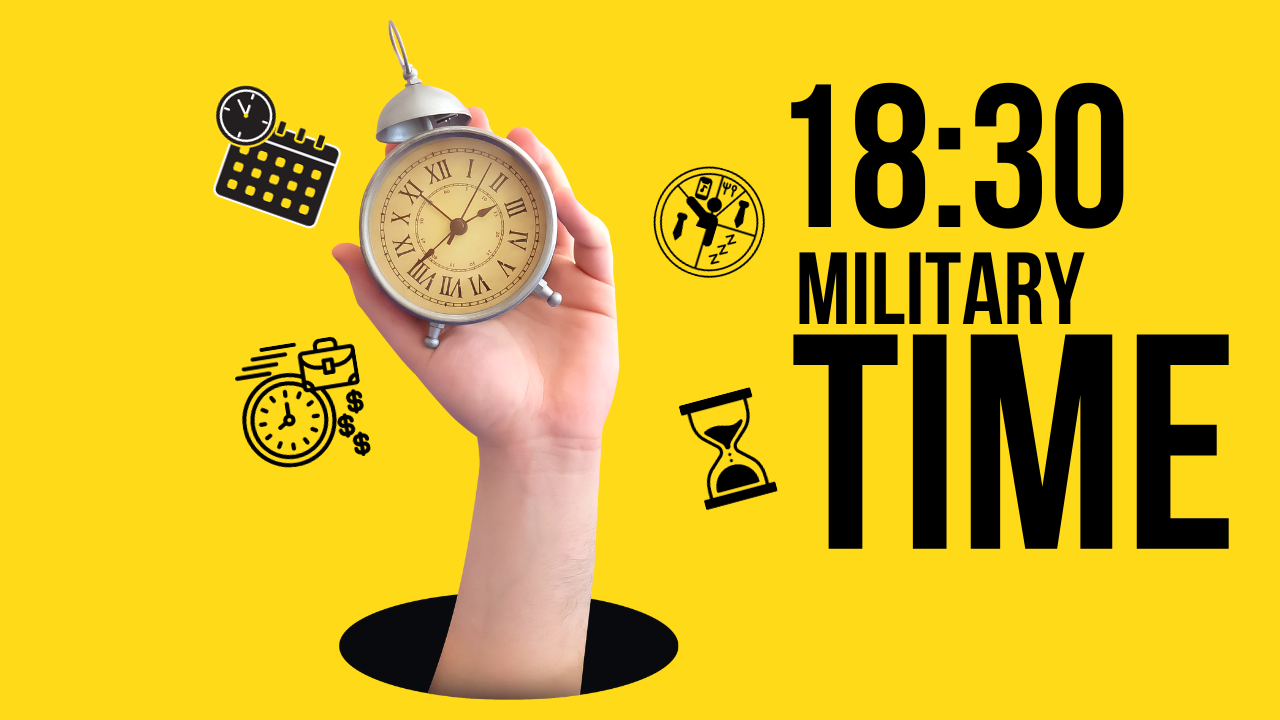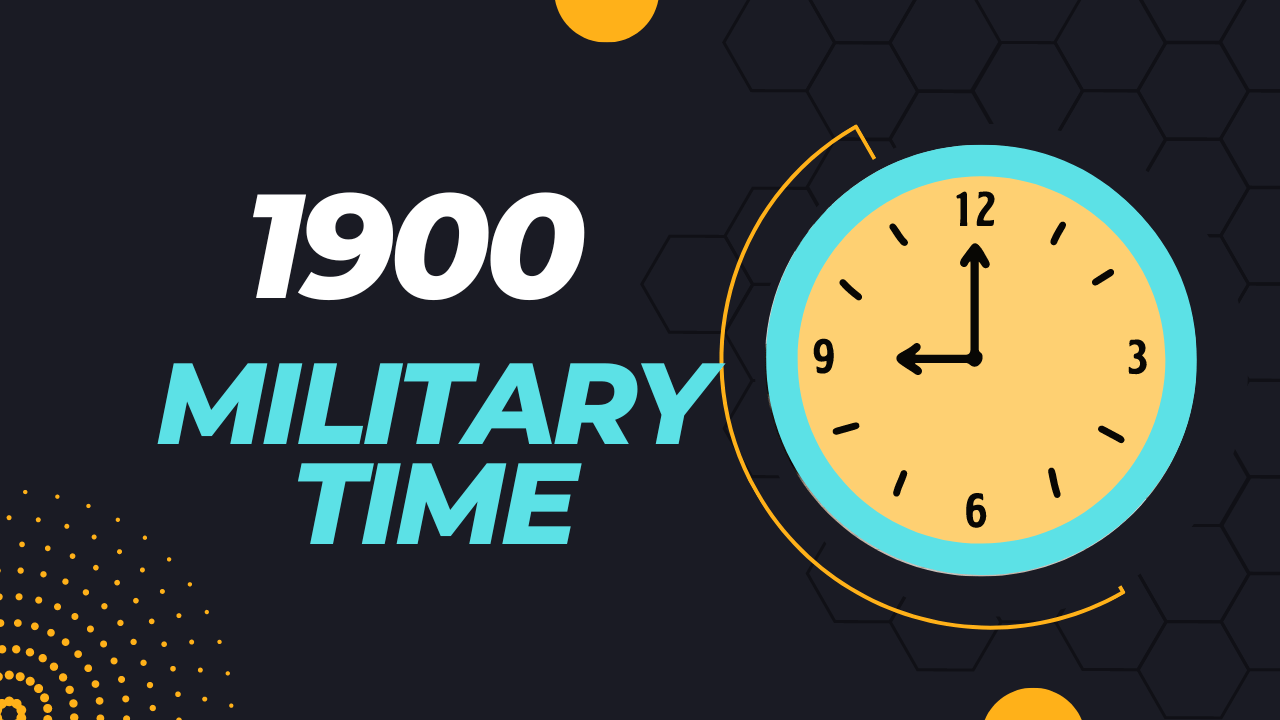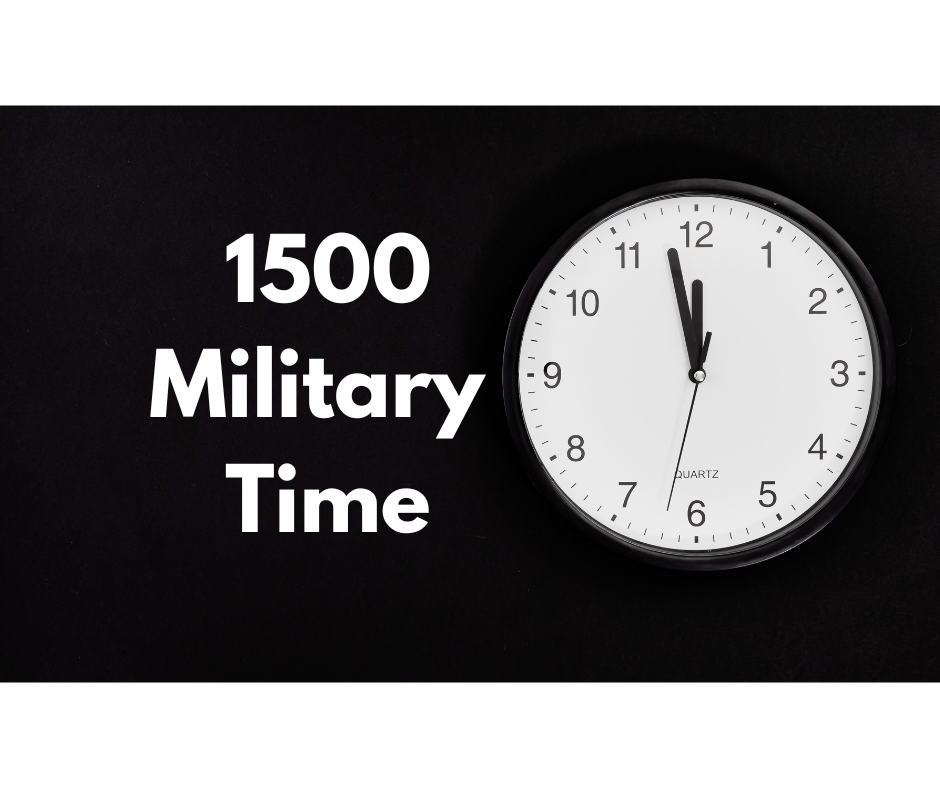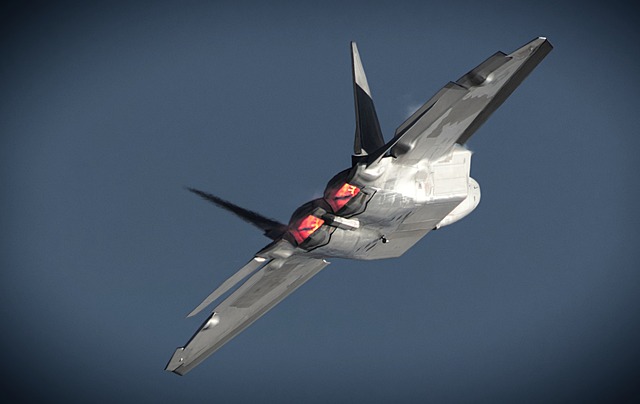1830 Military Time: Unveiling Precision and Clarity
1830 Military Time: The realm of timekeeping is diverse, with numerous systems in use globally. Understanding the concept of “1830 Military Time” sheds light on a standardized, 24-hour time notation primarily utilized by the military. Unlike the conventional 12-hour clock system, this format brings about precision and clarity in time representation.
Military Applications of 1830 Military Time
In military operations, the use of 1830 Military Time holds significant importance and serves various critical purposes. This time notation, following the 24-hour clock system, plays a pivotal role in ensuring synchronization, precision, and effective communication within the military framework.
Coordination and Synchronization
1830 Military Time aids in synchronizing operations, maneuvers, and tactical planning among military units. It enables precise coordination of activities, ensuring that different units are aligned in their actions, missions, and strategies.
Mission Planning and Execution
During military missions and exercises, using 1830 time allows for clear and unambiguous communication regarding schedules, timing of maneuvers, troop movements, and operational orders. It minimizes confusion and misunderstandings among personnel involved in the mission.
Logistics and Timetables
In logistics, such as supply chain management and transportation, adhering to a standardized time format like 1830 Military Time is crucial. It facilitates the efficient scheduling of deliveries, troop movements, and logistical support, ensuring smooth operations.
International Collaboration
When collaborating with allied forces or participating in multinational operations, a standardized time format like 1830 Military Time becomes essential. It facilitates seamless coordination and communication among different nations’ armed forces, fostering efficient joint operations.
Emergency Response and Crisis Management
During emergencies or crisis situations, time is of the essence. The use of 1830 Military Time ensures precise and rapid communication in emergency response scenarios, aiding in swift decision-making and resource deployment.
Training and Briefings
In military training sessions and briefings, the use of 1830 time helps in maintaining a disciplined and structured approach. It ensures that personnel are accustomed to the 24-hour clock, preparing them for accurate timekeeping in operational settings.
1830 Military Time, with its clear and standardized representation of time, is an integral part of military procedures and protocols. Its usage contributes significantly to operational effectiveness, coordination, and the overall success of military endeavors.
Understanding Format: 1830 Military Time
1830 Military Time is a representation of time within the 24-hour clock system. This format is widely used in military settings and various industries that prioritize precise timekeeping. Understanding this notation involves recognizing its unique features and how it differs from the conventional 12-hour AM/PM format.
Representation and Significance
In the 24-hour clock system, time spans from 0000 (midnight) to 2359 (one minute before the next midnight). Each hour is represented by a two-digit number, providing a continuous and unambiguous depiction of time throughout the day.
Breakdown of 1830 Military Time
- “18” signifies the hour: In 1830 Military Time, “18” stands for the hour, representing 6 PM in the evening.
- “30” denotes the minutes: The number “30” following the hour indicates that it is 30 minutes past 6 PM.
Distinguishing from 12-hour AM/PM Format
The distinction between 1830 Military Time and the traditional 12-hour clock lies in its explicit representation of time without the need for AM or PM indicators. This notation eliminates any ambiguity regarding morning or evening hours by providing a continuous count throughout the day.
Global Standardization and Precision
The use of 1830 Military Time contributes to global standardization, enhancing communication and coordination across various sectors. Its precise representation of time ensures clarity and accuracy, especially in scenarios where misinterpretation of timing could lead to critical consequences.
Transition and Adaptation
Adapting to the 24-hour clock system, including understanding and utilizing 1830 Military Time, may require a transitional period for individuals accustomed to the 12-hour AM/PM format. However, once familiarized, it offers a standardized and efficient way of expressing time.
In essence, comprehending 1830 Military Time involves recognizing its place within the 24-hour clock system and appreciating its role in providing a clear, unambiguous, and standardized representation of time, particularly in military, logistical, and international contexts.
Conversion Methods
Converting 1830 Military Time to Standard Time
Several tools and techniques facilitate the conversion process, aiding individuals unfamiliar with the 24-hour clock to grasp and convert 1830 time accurately.
Tools and Techniques for Conversion
Online converters, charts, and mental calculations empower users to convert 1830 Military Time into the standard AM/PM format effortlessly.
Common Usage
Examples of Events Using 1830 Military Time
Events such as evening briefings, shift changes, and train schedules often employ 1830 Military Time, ensuring precise communication and scheduling.
Benefits
Precision and Clarity
1830 Military Time brings exactness in conveying time, avoiding misunderstandings that may arise due to AM/PM confusion.
Reducing Ambiguity
In critical fields like healthcare and aviation, this format minimizes errors by providing a standardized time representation.
Challenges
Adjusting to 24-hour Format
Transitioning from the 12-hour clock to the 24-hour format might pose challenges initially, requiring adaptation and practice.
Cultural Differences
Some cultures predominantly use the 12-hour clock, making the acceptance of 24-hour time formats, like 1830 Military Time, a cultural challenge.
FAQs: 1830 Military Time
How does 1830 Military Time differ from 12-hour time?
1830 Military Time operates on a 24-hour clock system, also known as the military time format. In this system, time is represented in a continuous cycle from 0000 (midnight) to 2359 (one minute before midnight). This differs from the 12-hour clock commonly used, where the time repeats twice a day – AM (morning) and PM (afternoon/evening). In 1830 Military Time, the numbers represent the time in the evening, with “18” signifying 6 PM, and “30” denoting 30 minutes past 6 PM.
What events commonly use 1830 Military Time?
Various events and activities utilize 1830 Military Time for precision and standardized communication. Some common occurrences include evening military briefings, shift changes in certain industries, public transportation schedules (especially for evening services), and international operations where global standardization of time is necessary for coordination.
How can I easily convert 1830 Military Time?
Converting 1830 Military Time to the 12-hour AM/PM format involves recognizing the hour and minute digits. Here, “18” represents the hour, translating to 6 PM in the evening. The “30” stands for 30 minutes past the hour. To convert to the 12-hour clock, simply note that “18:30” equates to “6:30 PM.”
Why is 24-hour time used in the military?
The military widely employs the 24-hour clock, including 1830 Military Time, due to its clarity, consistency, and avoidance of ambiguity. Standardizing time representation across operations ensures precision in communication, reducing the risk of misunderstandings that might occur with the 12-hour AM/PM format.
Is 1830 Military Time used worldwide?
Yes, 1830 Military Time, being part of the 24-hour clock system, is used globally in various sectors beyond the military. Industries such as aviation, healthcare, transportation, and international business transactions widely utilize the 24-hour clock for accurate and standardized time communication.
Are there any disadvantages to using 1830 time?
While the 24-hour clock, including 1830 Military Time, offers clarity and precision, adapting to this format may present challenges initially for individuals accustomed to the 12-hour AM/PM system. Additionally, cultural differences and preferences might pose hurdles in universal acceptance and adoption of the 24-hour clock.
Conclusion
In summary, 1830 Military Time stands as a pivotal part of the 24-hour clock system, ensuring accuracy and standardized communication in various sectors. Embracing this notation offers an avenue for clearer and more precise time representation, streamlining global interactions and operational efficiencies.




